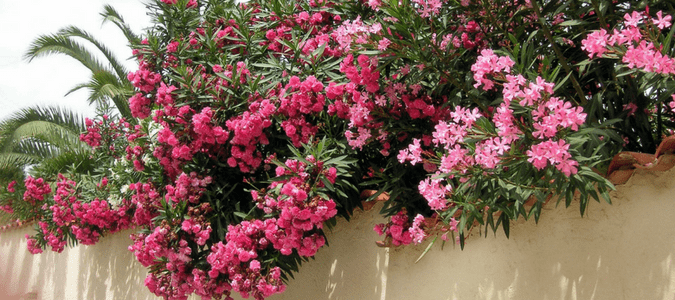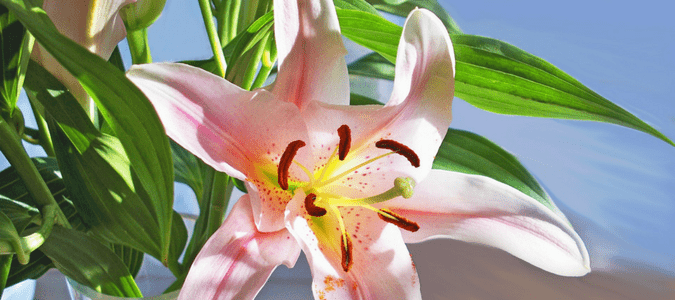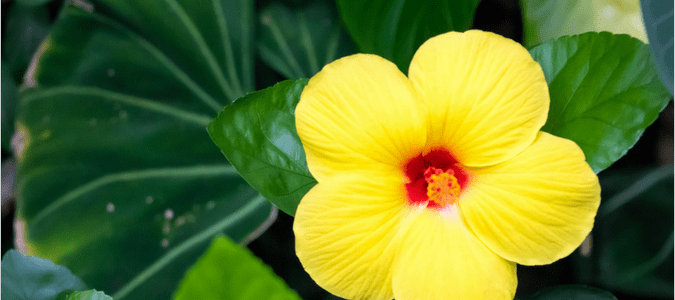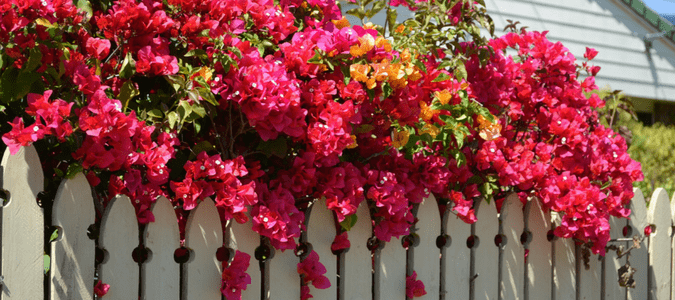
Living along the coast certainly has its advantages: access to the beach every day, coastal breezes, mild temperatures, fresh seafood and pretty views.
However, gardening in these environments can present a challenge. While saltwater has its benefits, most plants and flowers don’t like it. Salinity in the soil inhibits a plant’s ability to absorb important nutrients, thereby disrupting the plant’s metabolism.
Finding salt tolerant plants to for your lawn can be a challenge. In many cases, you can select salt tolerant varieties of ceratin plants which can do well in coastal climates. The salt tolerance of plants is determined by a variety of factors, including a plant’s ability to grow under and resist high winds, salt spray, alkaline soils and infertile, sandy soils.
When choosing plants that will be placed facing the ocean without buildings to protect them, you should choose highly salt tolerant plants. If the plants are protected by a building, you can get away with selecting types that are only slightly salt tolerant.
Keep reading for recommendations on salt tolerant shrubs, salt tolerant perennials, salt tolerant plants for beach landscaping and even ideas for salt tolerant tropical plants.
Salt Tolerant Shrubs
Salt tolerant shrubs can deliver a big impact, depending on how big they get. Finding a variety that you love can transform your yard into a beautiful oasis.
Oleander is a favorite shrub for coastal living. Not only are oleanders salt tolerant, but also they are heat tolerant, survive in full sun and thrive in a variety of soils while producing beautiful blooms. Different varieties can grow to a height of 10 feet and 8 feet wide, so they can cover a large area for just one plant.
Other highly salt tolerant shrubs that like sun or part shade include these varieties:
- Century Plant (Agave americana)
- Natal Plum (Carissa macrocarpa)
- Pampas Grass (Cortaderia selloana)
- Prickly Pear (Oputnia ficus-indica)
- Thorny Olive (Elaeagnus pungens)
- Dwarf Yaupon Holly (Ilex vomitoria)
- New Zealand Flax (Phormium tenax)
- Pittosporum and Dwarf Pittosporum (Pittosponrum tobira)
- “Majestic Beauty” Indian Hawthorn (Rhaphiolepis umbellata)
- Rugosa Rose, Rosemary (Rosa rugosa, Rosmarinus officinalis)
- Butcher’s Broom (Ruscus aculeatus)
- Sandwanka Viburnum (Viburnum suspensum)
- Yucca (Yucca gloriosa, Yucca aloifolia)
If part of your yard is sheltered from the wind and the sand that comes with it, you can try incorporating some moderately salt tolerant species into your landscape. The following shrubs are moderately salt tolerant:
- Agarito (Mahonia trifoliolata)
- Sago Palm (Cycas revoluta)
- Japanese Aucuba and Dwarf Aucuba (Aucuba japonica, Aucuba japonica ‘Nana’)
- Hedge Bamboo (Bambusa multiplex)
- Wintergreen Barberry (Berberis julianae)
- Bottlebrush (Callistemon rigidus)
- Flowering Quince (Chaenomeles speciosa)
- Sweet Pepperbush Clethra and Dwarf Sweet Pepperbush Clethra (Clethra alnifolia; Clethra alnifolia ‘Hummingbird’, ‘White Doves’ and ‘Sixteen Candles’)
- Fragrant Daphne (Daphne odora)
- Japanese Euonymus (Euonymus japonicus)
- Fatsia (Fatsia japonica)
- Pineapple Guava (Feijoa sellowiana)
- Forsythia (Forsythia x intermedia)
- Rose of Sharon (Hibiscus syriacus)
- Bigleaf Hydrangea (Hydrangea macrophylla)
- ‘Carissa’ Holly (Ilex cornuta ‘Carissa’), ‘Rotunda’ Holly (Ilex cornuta ‘Rotunda’), ‘Needlepoint’ Holly (Ilex cornuta ‘Needlepoint’) and Inkerry Holly (Ilex glabra)
- Chinese Juniper (Juniperus chinesis)
- Texas Sage (Leucophyllum frutescens)
- Japanese Privet (Ligustrum japonicum)
- Leatherleaf Mahonia (Mahonia bealei)
- Firethorn Pyracantha (Pyracantha coccinea)
- Indian Hawthorne (Rhaphiolepis indica)
- Southern Indica Azalea Varieties and Satsuki Azaleas (Rhododendron ‘Formosa’, ‘George Tabor’ and ‘G.G. Gerbing’; Rhododendron ‘Gumpo’ series)
- Stinking Viburnum (Viburnum odoratissimum)
- Adam’s Needle Yucca (Yucca filamentosa)
If you only need slightly salt tolerant shrubs, you can look for these plants at your local garden center:
- Abelia (Abelia x grandiflora)
- ‘Brilliant’ Chokeberry (Aronia arbutifolia ‘Brilliantissima’)
- Japanese Barberry (Berberis thunbergii)
- Butterfly Bush (Buddleia davidii)
- American Beautyberry (Callicarpa americana)
- Japanese Camellia and Sasanqua Camellia (Camellia japonica, Camellia susanqua)
- Gardenia (Gardenia jasminoides)
- Winterberry (Ilex verticillata)
- Banana Shrub (Michelia figo)
- Nadina Heavenly Bamboo (Nandina domestica)
- Dwarf Nandina (Nandina domestica ‘Firepower’, ‘Harbor Belle’ and ‘Moon Bay’)
- Tea Olive Osmanthus (Osmanthus fragrans, Osmanthus x fortune)
- Double Reeves Spirea (Spirea cantoniensis ‘Lanceata’)
- Cleyera (Ternstroemia gymnanthera)
- Walter’s Viburnum (Virburnum obvatum)
- Tinus Viburnum Laurustinus (Viburnum tinus)
- Weigela (Weigela florida)
Thinking you may prefer something smaller? Let’s move onto perennials.
Salt Tolerant Perennials
Perennials can add color to a yard that is typically dominated by its green grass. There are just a few highly tolerant flowers, such as the Blanket Flower Gaillardia, Daylily, Lantana, Prickly Pear Cactus, Lavender Cotton and Seaside Goldenrod. When you are making your selections, just keep in mind other important factors in your yard, such as the amount of sun the area gets, as well as how much water the plants need.
If you can give your flowers some protection, these moderately salt tolerant perennials would work well:
- Fern Leaf Yarrow (Achillea filipendulina)
- Common Yarrow (Achillea millefolium)
- Agapanthus (Agapanthus africanus)
- Sea Thrift (Ameria maritima)
- Butterfly Weed (Ascelpias tuberosa)
- Asparagus Fern (Asparagus densiflorus ‘Sprengeri’)
- Crinum Lily (Crinum varieties)
- Mexican Heather (Cuphea hyssopifolia)
- Hardy Ice Plant (Delosperma cooperi, Delosperma nubigenum)
- Cheddar Pinks Dianthus (Dianthus gratianopolitanus)
- Hummingbird Plant (Dicliptera suberecta)
- Firebush (Hamelia patens)
- Hardy Ginger Lily (Hedychium varieties)
- Candytuft (Iberis sempervierns)
- Red False Aloe (Hesperaloe parviflora)
- Turk’s Cap (Malvaviscus drummondii)
- Nippon Daisy (Nipponanthemum nipponicum)
- Seashore Mallow (Kosteletzkya virginica)
- Firecracker Plant (Russelia equisetiformus)
- Purple Heart (Setcreasia pallida)
- Hen and Chicks (Sempervivum tectorum)
- Society Garlic (Tulbughia violacea)
If your flowers will be protected from the ocean by a wall or another structure, you can choose one of the following slightly salt tolerant plants for your garden:
- Angel’s Trumpets (Brugmansia)
- Canna Lily (Canna varieties)
- Holly Fern (Cyrtomium falcatum)
- Golden Dewdrop (Duranta erecta)
- Purple Coneflower (Echinacea purpurea)
- Hardy Hibiscus (Hibiscus moscheutos, Hibiscus coccineus)
- Hosta (Hosta varieties)
- Red Hot Poker (Kniphofia varieties)
- Daffodil (Narcissus)
- Blue Jasmine Leadwort (Plumbago auriculata)
- Dwarf Mexican Petunia (Ruellia brittoniana ‘Katie’)
- Autumn Sage (Salvia greggii, Salvia microphylla)
- Princess Flower (Tibouchina urvilleana)
- Common Thyme Verbena (Thymus vulgaris)
Looking to put it all together? Now, let’s talk about beach landscaping ideas.
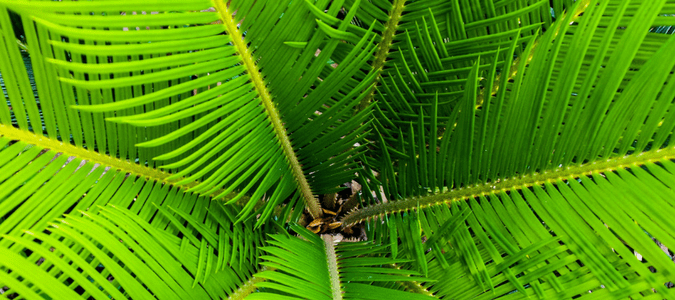
Salt Tolerant Plants for Beach Landscaping
In addition to all the salt tolerant plants we have listed about, you’ll probably also want to think about turf grasses, groundcovers, vines and trees. All of these types of plants thrive better than flowers in these environments.
Turfgrasses such as Seashore Paspalum have a very high salt tolerance and moderate drought tolerance and prefer sunny conditions. Hybrid and Common Bermuda, as well as Zoysia grasses, all have a high salt and drought tolerance, which is one reason you tend to see them in coastal areas.
If you are in search of a salt tolerant groundcover, you might consider trying:
- Asparagus Sprengeri Fern (Asparagus densiflorus)
- Algerian Ivy (Hedera canariensis)
- Goats-foot Morning Glory (Ipomea pes-caprae)
- Trailing Lantana (Lantana montevidensis)
- Virginia Creeper (Parthenocissus quinquefolia)
- Stonecrop (Sedum varieties)
- Asiatic Jasmine and Confederate Jasmine (Trachelospermum asiaticum, Trachelospermum jasminiodes)
- Wedelia (Sphagneticola trilobata)
- Shore Blue Pacific Juniper (Juniperus conferta)
- Lily Turf Liriope (Liriope muscari)
- Japanese Purpleleaf Honeysuckle (Lonicera japonica ‘Purpurea’)
- Mondo Grass (Ophiopogon japonicus)
Vines, which can sometimes serve as groundcover can help add color to your outdoor areas. If you have an idea which would work well for this type of plant, you might consider:
- Virginia Creeper (Parthenocissus quinquefolia)
- Cape Honeysuckle (Tecoma capensis)
- Bougainvillea (Bougainvillea varieties)
- Trumpet Vine (Campsis radicans)
- English Ivy (Hedera helix)
- Coral Honeysuckle (Lonicera sempervirens)
- Fig Ivy/Creeping Fig (Ficus pumila)
- Carolina Jessamine (Gelsemium sempervirens)
English Ivy needs shade, so if you opt for this plant, make sure it isn’t in full sun.
If you’d like to add height or shade to your yard, you might want to add a tree which can tolerate salty conditions. A few we suggest are:
- Chinaberry Texas Umbrella (Melia azedarach)
- Huisache (Vachellia farnesiana)
- Texas Persimmon (Diospyros texana)
- Southern Golden Raintree (Koelreuteria bipinnata)
- Mulberry (Morus alba)
- Mesquite (Prosopis glandulosa)
- Lavender Chaste Tree Vitex (Vitex agnus-castus)
- Camphor Tree (Cinnamomum camphora)
- Citrus (Cleopatra mandarin)
- Loquat (Eriobotrya japonica)
- Retama (Parkinsoia aculeata)
- Japanese Black Pine (Pinus thunbergii)
Large Trees, including the Australian Pine, Tamarisk Salt Cedar, Deodar Cedar, Arizona Cypress, Live Oak, Eucalyptus, Cottonwood and Bald Cypress also do well along the beach. Of course, if you want to go with a typical tropical landscape, then the Palmetto, Texas Palmetto, Cabbage or Florida Palmetto, Washington Fan Palm, Pindo Palm, European Fan Palm and Phoenix or Canary Island Date Palm work well along our Texas beaches.
If you have an area that gets hit with strong winds or experiences a good amount of sea spray, you might want to consider adding Sea Coast Blue Stem, Salt Grass, Lindheimer’s Muhly Grass, Sand Knotgrass, Fountain Grass and Giant Seaoats to your lawn and garden.
Salt Tolerant Tropical Plants
If you want a more tropical look for your landscaping, you have plenty of options. You will still need to take into account which types are shade tolerant and which plants need sun, depending on the conditions in the area you want to plant.
Palms are the most obvious addition to turn your property into a tropical oasis. Whether it’s a large Sabal Palmetto or a smaller Saw Palmetto, these plants are adapted to flourish in coastal areas.
Ornamental grasses like the Sand Cordgrass work well along the coast when paired with Oleander, Bougainvillea and some of the perennials below. A combination of these plants can help you create a pretty tropical escape.
Tropical perennials that do well at the beach include:
- Wright’s Texas Firecracker (Anisacanthus wrightii)
- Purple Milkweed (Asclepias purpurascens)
- Cast-iron plant (Aspidistra elatior)
- Various Angel’s Trumpets (Brugmansia) varieties, including “Betty Marshall”, “Double White”, “Charles Grimaldi”, “Cherub”, “Snowbank”, “Sunset”, “Intrigue”, “Lemon Punch”, “Minerva”, “Orange Punch” and “Pacific Beauty”
- Several Canna (Canna x generalis) varieties, such as “Bengal Tiger”, “Blueberry Sparkler”, “Chocolate Sunrise”, “Ermine”, “Flaming Kabobs”, “Phasion” and “Pink Sunburst”
- Louisiana Canna (Canna glauca), specifically the “Karin” and “Panache” varieties
- The “Red Stripe” Wild canna lily (Canna indica)
- Several varieties of Crinum lily (Crinum americanum), including “Elizabeth Traub”, “Ellen Bosanquet”, “Infusion”, “Li’l Stinker”, “Parfait”, “Persephone”, “Peyton’s Place”, “Pink Trumpet”, “Sangria”, “Super Ellen” and “Wading Pool”
- The “Schreck” species of Milk and Wine Lily (Crinum x herbertii)
- King’s Cross (Dicliptera suberecta)
- Four varieties of Garland Flower (Hedychium coronarium); (“Anne Bishop”, “Daniel Weeks”, “Kin Ogi” and “Vanilla Ice”)
- “Applecourt” and “Slim’s Orange” types of Scarlet Ginger Lily (Hedychium coccineum)
- “Prayer Flags” variety of Kahili Ginger (Hedychium urophyllum)
- “Anna’s Red” type of Lenten Rose (Helleborus orientalis)
- “Red Silver” version of Stinking hellebore (Helleborus foetidus)
- Over one dozen Hellebore (Helleborus x hubridus) varieties
- Four Day Lily (Hemerocallis) varieties: “August Flame”, “Autumn Minaret”, “Freewheelin’” and “Steeple Jackie”
- Red yucca (Hesperaloe parviflora)
- “Swamp Angel”, “Cranberry Crush”, “Fantasia”, “Fireball”, “Heartthrob” and “Midnight Marvel” Texas star hibiscus (Hibiscus coccineus) varieties
- China rose (Hibiscus rosa-sinensis) varieties, including “Raspberry Rose”, “Flora Plena”, “Peppermint Flare”, “Robert Fleming” and “Summer Storm”
- “Voodoo” variety of Amaryllis lily (Hippeastrum puniceum)
- A dozen Hosta varieties
- “Dick Weaver” and “Dunbar Creek” types of Garden phlox (Phlox Paniculata) varieties
- “Chi chi” variety of the Mexican petunia (Ruellia brittoniana)
- The “Ragin’ Cajun” Red ruellia (Ruellia elegans)
- The “Amistad” type of Sage (Salvia)
- Mealy blue sage (Salvia farinacea)
- Autumn sage (Salvia greggii)
- Chinese windmill palm (Trachycarpus fortunei)
- August rain lily (Zephyranthes candida)
Another option is to use containers for your landscaping so that you can bring these plants inside to control the salinity of the soil. By using this approach, you can have the flexibility to use lower salt tolerant alternatives to what species might work well in other areas. You can also change the salinity of the soil or build a fence or other barrier to help protect the plants to increase the variety of plants you may choose for your beachside home.
ABC Knows Coastal Lawns
Finding plants that thrive in our coastal environment can be a challenge. If you have a brown thumb or just need a second opinion on how to turn your yard into an oasis, contact the professionals at ABC Home & Commercial Services. Our experienced lawn care technicians can assist you in creating outdoor spaces that will remain healthy in our conditions here in Corpus Christi.
